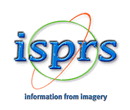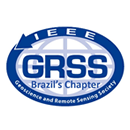ALGORITHMS COMPARISON: COMMERCIAL SOFTWARE X GOOGLE EARTH ENGINE
Autores
1Pinto, A.C.; 2Rodrigues, A.L.; 3Cruz, B.B.; 4Benitez, D.J.R.; 5Andrade, I.; 6Pedro, J.M.; 7Rosa, M.R.; 8Albuquerque, N.G.; 9Abreu, T.K.; 10Lopes, T.; 11Machado, C.A.A.S.; 12Quintanilha, J.A.
1EPUSP
2EPUSP
3PROCAM/USP
4FSP/USP
5PROCAM/USP
6UFABC
7FFLCH/USP
8EPUSP
9EPUSP
10FSP/USP
11EPUSP
12EPUSP
Resumo
ALGORITHMS COMPARISON: COMMERCIAL SOFTWARE X GOOGLE EARTH ENGINE INTRODUCTION This paper has two aims: - evaluate the landcover classification performance of Google Earth Engine - GEE platform and ENVI®, using both raw and preprocessed Landsat imagery and two commonly used classifiers; - compare and analyze the supervised classification performed by the both in two different urban areas of the city of São Paulo, as well as the performance of two classification algorithms. The compared algorithms, in both cases, were Minimum Distance (MD) and Support Vector Machine (SVM). METHODOLOGY For these studies, two experiments were developed: one in a landscape area and another in two urban areas. The landscape area is in the coast of Brazil, in the Atlantic Forest. All supervised classifications were done based on the same samples collected. A LANDSAT 8 (OLI) scene was used in this study. Raw (i.e., C1 Level 1) and processed (i.e., Surface Reflectance) images were used in classification to support performance comparison between GEE platform and ENVI that exhibits supervised and unsupervised classification algorithms natively implemented. Seven land cover classes (i.e., artificial areas; agricultural areas; water bodies, forest; herbaceous/ shrubby vegetation, shadow, open spaces with scattered vegetation) were defined according to the first two levels of CORINE typology. The 35 training sample polygons of each class were collected from the training area, using visual inspection on the Landsat images and used in both classification software, applied to raw and preprocessed images. Support Vector Machine (SVM) and Mahalanobis Minimum-distance classifier (MD) were used. Classification`s accuracy was evaluated by the same control points produced using GEE high resolution imagery as ground truth samples. A supervised classification was used as reference to randomly distribute 100 points per class in admeasurement area. Ground truth pixels from the control points samples were used to calculate the confusion matrices. The overall accuracy, commission and omission errors were compared for each methodology proposed herein. In the urban case two areas with differentiated urbanization levels were chosen. One of the areas has high urban density, which belongs to the expanded center of the city, and the second area is to the south of the Sao Paulo city, border area of urban growth where there are still large conservation areas of urban forest. Images from the Sentinel-2 satellite were used. The selected image has a 1C classification, which includes radiometric and geometric corrections, such as ortho-rectification and spatial registration. The date of the chosen image was taken on July 4, 2016 and the images B, G, R and NIV were downloaded from the site. To compare the results obtained from the supervised classification the urban area, a simple comparison factorial experiment was designed in which the effects of two factors were evaluated (classification algorithm and level of urbanization) for the software and platform. RESULTS Landscape area The land cover classifications exhibited variation in terms of the applied classifier, image type and processing environment. The most accurate land cover classification was obtained using SVM classifier with LANDSAT preprocessed images in GEE platform (90.9 overall accuracy and 0.89 kappa index). Preprocessed images presented better performance than raw images in all methodological approaches. The results obtained reinforce the importance geometric processing of remote sensing images to overcome potential source of errors and improve land cover classification. Finally, processing environment also triggered variation in classification results. GEE derived classifications exhibited superior overall accuracy and kappa index values than those performed in ENVI. This might be a result of classifier algorithm implementation intrinsic to each processing environment, e.g., the computational complexity employed. Urban regions In the two classifications, the classes with the greatest presence are Urban, Vegetation and Shadow. However, there is a significant variation in the proportion of cover presented. This variation is clearly reflected in the agreement of the ratings made by the software that is only 36%. In the confusion matrix, it is possible to observe that there is a significant difference in the total accuracy of the classifications (47 to 72.2%). There is a small difference in the total accuracy obtained, with a difference of only 3.4%. The highest commission errors are observed for the Soil class in both algorithms. The highest errors of omission were presented in the Shadow class with similar values (86.5 and 92%), Vegetation (55, GEE = 69%) and Soil (45 an36%). CONCLUSIONS Our results indicate that preprocessed images improve classification results and SVM is a more robust classifier than MD. The MD algorithm is not a good classifier to perform mapping of highly heterogeneous landscapes such as urban areas evaluated. However, within the performed comparison, it was not expected to find dramatically different total accuracy values as presented in the test results, considering that the samples used were the same. Therefore, it is recommended to carry out other tests that allow to evaluate if there is a difference between the algorithms used by the two software/platform or if the differences found can be attributed to the quality of the samples used and/or the used classification parameters. No significant differences were found in the maps obtained with the SVM classifier in the used tools. GEE proved to be a powerful classification tool, since the resulting class maps that achieved high accuracy showed a quality comparable to and/or superior to ENVI that is already a recognized tool.
Keywords
algorithm performance; landscape; urban










